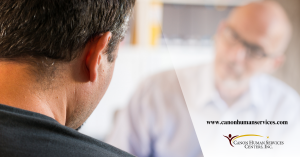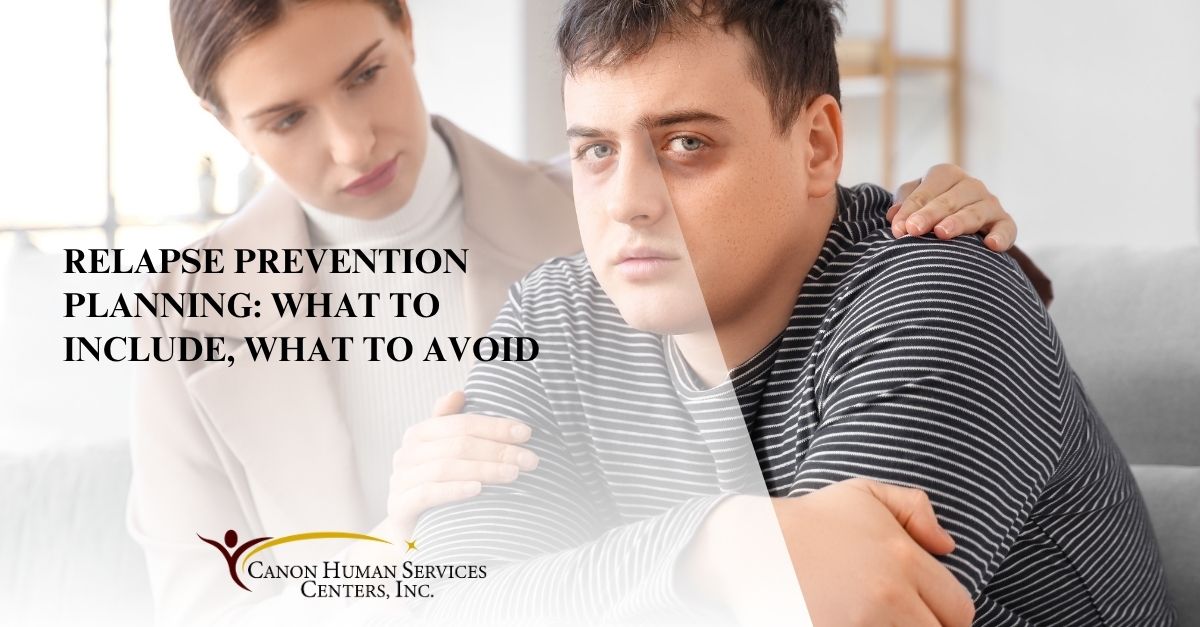Recovery from drug addiction is a journey that doesn’t end when treatment does. One of the most critical tools for maintaining sobriety is a relapse prevention plan—a personalized roadmap designed to help you recognize warning signs, manage triggers, and stay on track long after leaving a treatment program.
Whether you’ve just completed drug addiction treatment or you’re supporting someone who has, understanding what makes an effective relapse prevention plan can make all the difference. A strong plan isn’t just a safety net; it’s a proactive strategy that empowers you to navigate life’s challenges without returning to substance use.
In this guide, we’ll walk through the essential components of a relapse prevention plan, common pitfalls to avoid, and how aftercare programs can support your long-term success.

What Is a Relapse Prevention Plan in Drug Addiction Treatment
A relapse prevention plan is a written document that outlines strategies to avoid relapse and maintain recovery. It identifies personal triggers, high-risk situations, and coping mechanisms that help you respond to cravings or stressful circumstances in healthy ways.
Think of it as your personal playbook. When life gets overwhelming or old temptations resurface, this plan gives you concrete steps to follow instead of falling back into destructive patterns.
Key Components of an Effective Drug Addiction Treatment Plan
Identify Your Triggers
Triggers are people, places, emotions, or situations that increase the risk of relapse. They can be external (like visiting a bar or seeing old friends who use drugs) or internal (such as feelings of loneliness, anger, or anxiety).
Start by making a comprehensive list of your triggers. Be honest and specific. Common triggers include:
- Emotional states: stress, boredom, depression, anger
- Social situations: parties, concerts, or gatherings where substances are present
- Environmental cues: neighborhoods associated with past drug use
- Physical sensations: fatigue or pain
- Interpersonal conflicts: arguments with family members or romantic partners
Once you’ve identified your triggers, write down how each one affects you and what warning signs appear when you’re exposed to them.
Recognize Your Stressors
Stress is one of the most significant contributors to relapse. Understanding what causes you stress—and how you typically respond to it—is essential for prevention.
Consider both chronic stressors (like financial difficulties or relationship problems) and acute stressors (such as losing a job or experiencing a sudden loss). Document how stress manifests in your body and mind. Do you become irritable? Withdrawn? Do you experience physical symptoms like headaches or insomnia?
Knowing your stress patterns helps you catch warning signs early and activate your coping strategies before things spiral.
Evaluate Your Environment
Your physical and social environment plays a huge role in recovery. Certain places or people can make sobriety more challenging, while supportive environments can strengthen your commitment to staying drug-free.
Ask yourself:
- Are there specific locations I should avoid?
- Do I need to distance myself from certain relationships?
- Is my living situation conducive to recovery?
- Do I have access to sober social activities?
If your current environment poses risks, consider making changes. This might mean finding new housing, changing your route home to avoid certain neighborhoods, or spending more time in places that support your recovery.
Develop Healthy Coping Strategies
Coping strategies are the tools you’ll use when cravings hit or life becomes difficult. These should be healthy, accessible alternatives to substance use.
Effective coping strategies include:
- Physical activity: Exercise releases endorphins and reduces stress. Whether it’s running, yoga, or a walk around the block, movement helps.
- Mindfulness and meditation: These practices help you stay present and manage overwhelming emotions.
- Creative outlets: Art, music, writing, or other hobbies provide healthy ways to express feelings.
- Social connection: Spending time with supportive friends and family reminds you why recovery matters.
- Structure and routine: A consistent daily schedule reduces uncertainty and keeps you focused.
Write down at least five coping strategies you can turn to when you’re struggling. Keep this list somewhere accessible—on your phone, in your wallet, or on your bathroom mirror.
Know When to Seek Help
Part of relapse prevention is recognizing when you need additional support. You don’t have to handle everything alone, and asking for help is a sign of strength, not weakness.
Include in your plan:
- Contact information for your therapist, counselor, or sponsor
- Crisis hotlines or text services
- Trusted friends or family members who understand your recovery
- Local support groups or 12-step meetings
Set clear guidelines for when you’ll reach out. For example: “If I experience cravings for more than two days in a row, I will call my sponsor.” Having these boundaries in place makes it easier to act when you need help most.
Build a Support Network
Recovery thrives in community. Surround yourself with people who encourage your sobriety and hold you accountable.
Your support network might include:
- Family members who respect your boundaries
- Sober friends who share similar goals
- A sponsor or mentor from a recovery program
- Professional counselors or therapists
Regular check-ins with your support network keep you connected and provide opportunities to share challenges before they become crises.
What to Avoid in Your Drug Addiction Treatment Relapse Prevention Plan
Being Too Vague
A plan that says “avoid stress” or “stay positive” isn’t actionable. Be specific. Instead of “avoid stress,” write “when I feel stressed, I will take a 15-minute walk or call my sponsor.”
Specificity makes your plan practical and usable in real-life situations.
Ignoring Warning Signs
Relapse doesn’t happen overnight. It’s usually a gradual process that begins with emotional or mental shifts long before substance use resumes.
Warning signs might include:
- Romanticizing past drug use
- Isolating from supportive people
- Neglecting self-care
- Skipping therapy or support group meetings
- Increasing irritability or mood swings
Don’t dismiss these signs. Acknowledge them in your plan and outline steps to address them immediately.
Overconfidence
Feeling confident in your recovery is important, but overconfidence can be dangerous. Believing you’re “cured” or that you can handle high-risk situations without consequences often leads to relapse.
Stay humble. Recognize that recovery is an ongoing process, and vigilance is necessary even when things are going well.
Neglecting Self-Care
Recovery requires energy, and you can’t pour from an empty cup. Skipping meals, sacrificing sleep, or ignoring your mental health makes you more vulnerable to relapse.
Prioritize self-care as a non-negotiable part of your plan. This includes adequate sleep, nutritious food, regular exercise, and activities that bring you joy.
How Aftercare Supports Drug Addiction Treatment and Relapse Prevention
Aftercare programs provide ongoing support after completing primary drug addiction treatment. These programs reinforce the skills learned in treatment and help you navigate the transition back to everyday life.
Aftercare can include:
- Individual therapy: One-on-one sessions with a counselor to address ongoing challenges.
- Group therapy: Peer support groups where you can share experiences and learn from others.
- Sober living environments: Structured housing that provides accountability and a drug-free space.
- Outpatient services: Flexible programs that allow you to continue treatment while returning to work or school.
Organizations like Canon Human Services offer both outpatient and residential services to support recovery. Located in South Central Los Angeles, Canon provides drug-free counseling and support tailored to the needs of individuals in the community. While residential services are currently available only to male applicants, outpatient services are open to both men and women.
Aftercare is not a sign that your initial treatment “didn’t work.” It’s a natural extension of the recovery process, designed to help you maintain the progress you’ve made.
Creating Your Own Relapse Prevention Plan
Ready to build your plan? Start by setting aside time to reflect on your triggers, stressors, and coping strategies. Be honest with yourself, and don’t rush the process.
Here’s a simple framework to get started:
- List your top five triggers and describe how you’ll respond to each one.
- Identify three major stressors in your life and outline healthy ways to manage them.
- Write down five coping strategies you can use when cravings or difficult emotions arise.
- Create a contact list of people you can reach out to for support.
- Set clear boundaries around high-risk situations or environments.
- Schedule regular check-ins with your support network or aftercare provider.
Consider downloading a relapse prevention checklist to keep your plan organized and accessible. Many treatment centers and recovery organizations offer free templates you can customize.
Staying Committed to Recovery After Drug Addiction Treatment
Relapse prevention planning is not a one-time task. Your plan should evolve as you grow in your recovery. Revisit it regularly—at least once every few months—and update it based on new challenges or insights.
Remember, recovery is not about perfection. It’s about progress, resilience, and the commitment to keep moving forward even when things get tough. A well-crafted relapse prevention plan gives you the tools to do just that.
If you or someone you know is navigating life after drug addiction treatment, take the time to create a relapse prevention plan. It’s one of the most powerful steps you can take toward a healthier, more fulfilling future.

